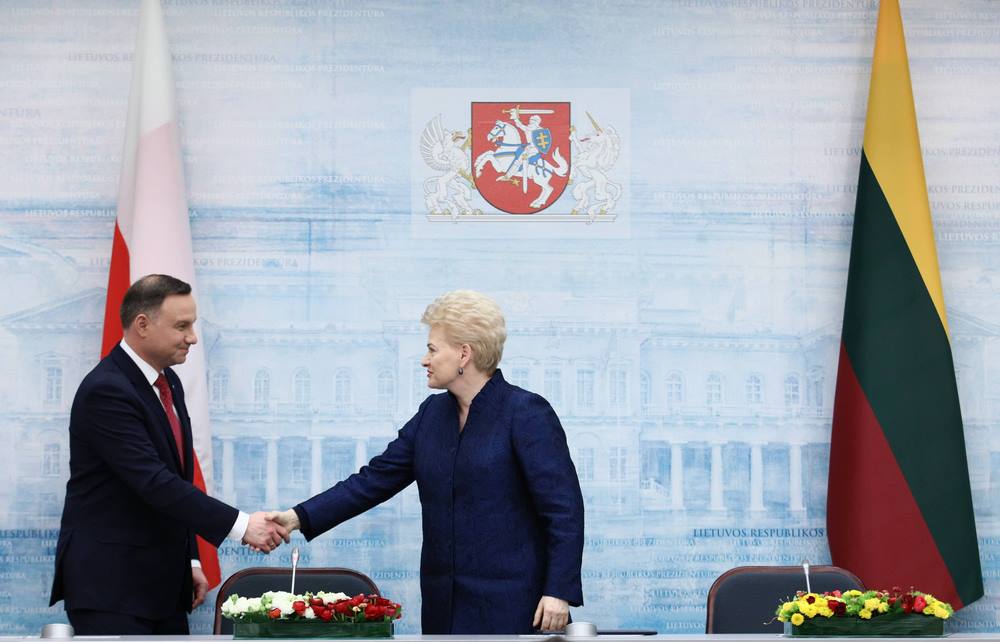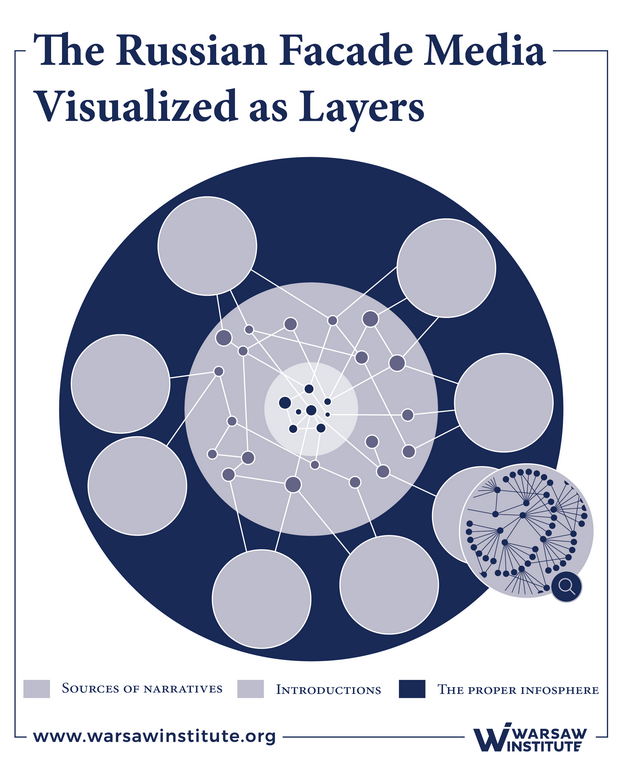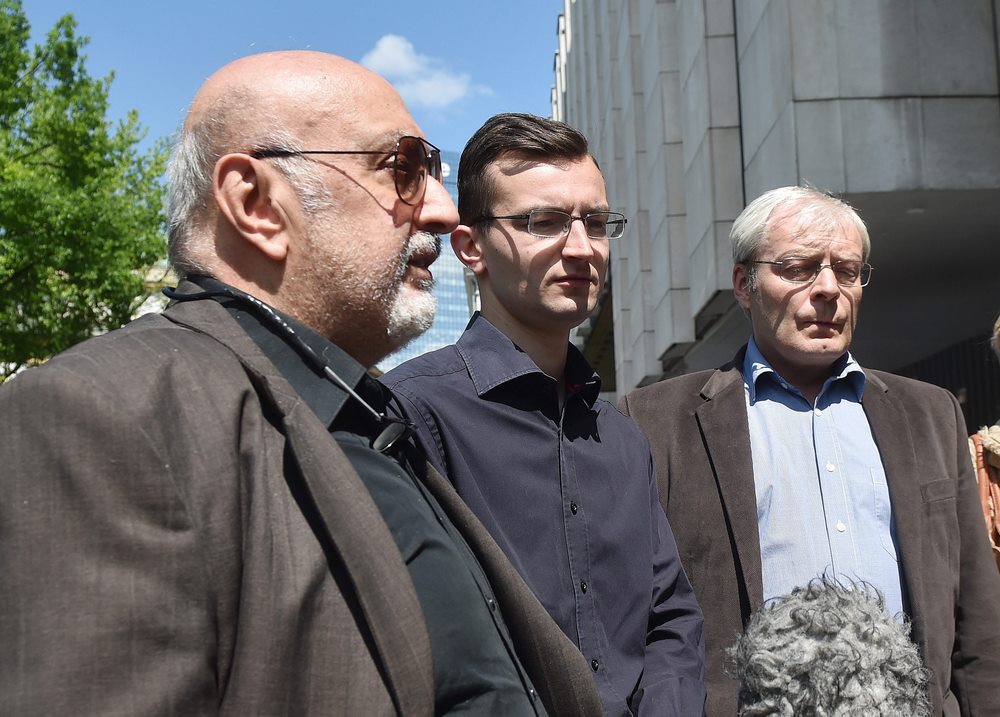THE WARSAW INSTITUTE REVIEW
Date: 15 May 2018 Author: Małgorzata Zawadzka
Today’s Potemkin Village: Kremlin Disinformation and Propaganda in Poland
In most studies on the resistance of individual states to Russian propaganda, Poland is considered one of the most resilient countries. Indeed, openly pro-Russian narratives find little understanding among Polish consumers. Similarly, Russian media projects like Sputnik and Russia Today (RT) have not gained in popularity on the Vistula. So why does their message enter the Polish public discourse through the façade media, and how such media they falsify the picture of reality?

In most studies on the resistance of individual states to Russian propaganda, Poland is considered one of the most resilient countries. Indeed, openly pro-Russian narratives find little understanding among Polish consumers. Similarly, Russian media projects like Sputnik and Russia Today (RT) have not gained in popularity on the Vistula. So why does their message enter the Polish public discourse through the façade media, and how such media they falsify the picture of reality?
When Prince Grigory Potemkin wanted to please Tsarina Catherine, he ordered to construct fake villages along her travel route in the province he managed. The cheerful villagers, who were greeting the passers-by and the neat facades of the houses, were supposed to give the Tsarina and her companions the impression of efficient and skillful management of the region, and at the same time conceal its poverty. And although some historians argue about whether such phenomenon actually took place, the term “Potemkin Village” has permanently entered many languages as a synonym for mystification, deception and creating a picture of reality quite different from the actual state of affairs.
Why Build Facades?
Deception, disinformation, propaganda or unsophisticated lies — regardless of the name, this tactic of exercising power has been known in Russia for centuries. In 1938, Włodzimierz Bączkowski, a Polish geopolitician, in the article “Notes on the essence of Russian power”, defined Moscow’s primary power:
“Russia’s main weapon, which may be decisive for the state’s current sustainability, along with its strength and possible future victories, is not a normal factor for European conditions of military strength. Instead, Russia counts rather on its deep political action, characterized by a diversionary, decentralized and propagandistic essence.”[1]
When discussing the implementation of these assumptions, the author mentions that in 1905, according to statements of the then finance ministry, Russia spent two million francs on subsidies for the French press. Today, the same goals can be achieved at a very low cost — if not for free.
The world has obviously changed a lot since then. Speaking from a communication point of view, the most important change occured first with the emergence of the Internet, which gave birth to a completely new space of real-time communication. This invention was then followed by social media, which conquered the world and ultimately blurred the line between the recipient and the sender, also allowing the amplification of the content produced. Cyberspace has affected not only the speed of communication, but also the way of storing data and its illegal acquisition, obtaining and processing information by individuals, and finally creating and distributing content through a network of bots and trolls. Naturally, this provided new tools for manipulating the public. Thus, a Russian academic, Vladimir Lisichkin, emphasized the destructive action of modern media and the impact of the function of unrealistic symbols on human action, against their interests:
“Media divides people, destroys traditional, direct contacts, changing them through a television or computer. The simultaneous dissemination of contradictory and mutually exclusive worldviews violates a stable world of values, breeds indifference and apathy, stifles criticism and causes social confusion: a stronger impression is not made by a soundly documented analysis, but by an energetic and self-assured, strong statement, even without evidence (…) The ‘mass’ person is impulsive, often changing moods, ready only for short-term action. Often, he prefers an illusion over reality.”[2]
Media — both traditional and new ones, including the blogosphere — are therefore an extremely effective and cheap means of manipulating society. Such state of matters can be perceived especially in the case of forums, where not only can everyone express themselves, but they can also find a receptive audience.
How to Draw Poles to the Kremlin’s Side
Poles are convinced that they are immune to Russian propaganda — this belief is grounded in such experiences as a difficult history (including recently), widespread awareness of the country’s unfavorable geopolitical position and the unfriendly policy direction of its eastern neighbor’s energy companies. Due to these factors, openly pro-Russian narratives find few supporters. It is difficult for the Russian media to break into the Polish infosphere, mainly due to the lack of a natural audience. Only 6% of Poles are fluent in Russian; in 2015, the TNS research agency showed that only 19 percent of respondents to a survey declared a good or very good knowledge of the language.[3] Attempts to glorify Soviet soldiers, the times of the Polish People’s Republic and the depreciation of Polish history, are met with great opposition from Polish society. In the report “Vulnerability Index: Subversive Russian Influence in Central Europe” from 2017, Poland was rated as the least susceptible to Russian influence.[4] However, this research concerned direct Russian propaganda, but did not include any hidden one.
Contrary to appearances, it is precisely the conviction in its own resilience that is a hindrance for Warsaw in the effective fight against more veiled and less obvious messages coming from Moscow through local collaborators. Edward Lucas also noticed this in an interview for Kultura Liberalna (Liberal Culture):
“The greatest weakness of Poland is the arrogance and certainty that Poles are fully immune to Russian propaganda… But if the Russians tell you that the West will betray you, and Polish culture is being attacked by aggressive, rotten, Western culture, if they say that Ukraine is ruled by people who celebrate the genocide in Volhynia and they will probably incite its repetition, these are the messages that will certainly affect Polish society.”[5]
It is true; crude propaganda about the benefits of allying with Russia have been replaced by other narratives. One one hand, these façades, artificially embedded in or resonated into the infosphere, inevitably inevitably support the implementation of the Kremlin’s goals, i.e. the weakening of the state. On the other hand, they use existing weaknesses and societal fears to construct an attractive environment capable of drawing in people against their own interests. For example, some narratives, which equated membership in the European Union with the loss of sovereignty, and compared the presence of NATO troops in Poland to an occupation, were elaborated on under the cover of the concern for the common good, which may be understood in many ways.
Another important group of recipients are patriotic circles, attempts are mode to distort their national pride into chauvinism and nationalism. This is especially visible in the context of relations with Ukraine, Lithuania, USA, Germany, Israel, etc. Such phenomenon is by no means limited by national borders — just like in Poland, the pseudo-media creates a negative image of the West or dissenters and strives to reopen the old wounds of unresolved historical and economic problems with Kiev and Berlin. Therefore anti-Polish content or that which is unfavorable to Poland and is published abroad, is used to support this thesis. But such information war does not only target conservative people since this strategy aims to identify the ignition point and fuel the dispute on both sides, including winding up extreme positions from the opposite ends of the scale to make the discourse as turbulent as possible.
Topography of the Potemkin Village
At the heart of the Potemkin media village are both Polish and English-language Russian media, including Sputnik, RT and others, though they do not promote their ties with the Kremlin. An example is the Niezależny Dziennik Polityczny (Independent Political Journal, NDP), which regularly fabricates information about American soldiers stationed in Poland. These media channels are buffered by another layer of publishers — sites that knowingly spread given narratives, despite the knowledge of their origin and goals, which allow the narratives to be disseminated into society. These sites include Kresy.pl, Wolna-Polska.pl, WirtualnaPolonia.com, Obserwator Polityczny (official partner of the Russkiy Mir Foundation in Poland) and others. They focus primarily on fomenting hatred towards Ukrainians and Americans, posing as good, “patriotic” sources of information. In addition, an essential role is played by discussion groups on social media and blog platforms, such as Neon24, but also the huge volume of WordPress blogs (e.g. Dziennik Gajowego Maruchy, known for spreading Kremlin propaganda) In contrast to the dominant Polish mass media, there you can expect to see with much more frequent references to Sputnik. They constitute the key links in the distribution chain of malicious content as they make it possible to avoid being classified as state propaganda of the Kremlin at the initial stage of its dissemination.

The second layer also includes internet forums. There are several forums on which some users regularly post disinformation and propaganda content, quite often from the aforementioned NDP, but also including local forums for the cities of Orzysz and Tomaszów Lubelski. This choice is not incidental as American soldiers are stationed in Orzysz as part of the Enhanced Forward Presence mission. Tomaszów Lubelski is located less than 100 kilometers from Lviv and Ukrainian military training grounds; a unit of Poland’s Territorial Defense is also located there. Other avenues through which agitation is carried out for the Kremlin are esoteric websites, which at the same time spread conspiracy theories and anti-American content. Among conspiracy theorists there are all kinds of “alternative sources of information” offering a whole spectrum of messages: sites “independent” from the government and the EU, sites that enable freedom of uncensored expression that allow, for example, incitement to racial or ethnic hatred, and transmit “revealed truth”, hidden from Poles by the government, Jewish freemasons, aliens, reptilians, Egyptian pyramids or disclosed in magical prophecies.

The media image of mystification is complemented by ordinary members of Polish society, who for various reasons spread Sputnik-like articles. After several high-profile cases highlighting how the mainstream media published false messages and broad criticism of the quality of journalism, more attention began to be paid to the sources of controversial articles.Therefore it is has become much more difficult to disinform the mainstream media, thus Russian activities must rely on niche media, blogs and social media.
The King is Naked
Potemkin websites and networks are really numerous — some are better camouflaged, others worse. However, to realize how deeply a fake information construct can reach, it is worth analyzing the case of the previously mentioned NDP, described in more detail by the OKO.press portal in 2017.
The site was created in 2014 and is run in accordance with the principles of a typical source of disinformation: the content is mainly copied from other portals, its own articles are classic examples of fake news, the language is strongly emotionally charged — mostly texts ripped off from tabloids. The editor-in-chief, journalists, and moderator of the NDP group on Facebook, all use other people’s faces as profile photos and are active on social media.
Initially, attempts were made to create their own content, however, numerous language errors and carbon copies from the Russian language forced the creators to give up this solution. And so, the article “Anakonda-18 — a scenario of the invasion on Russia and Belarus” by Jan Radžiūnas is — literally — a patchwork of other texts on the Anakonda-16 and Dragon-17 military exercises. Fragments of texts have been copied here and there, for example: Polish Minister Michał Dworczyk’s statement from 2016 was cited by Radžiūnas as a statement from Minister Bartosz Kownacki in 2017; NDP also increased the number of soldiers participating in Anaconda from 17,000 to 100,000, and called an air raid defense exercise a preemptive raid exercise. A similar method was used when creating the Facebook page “Americans and lawlessness”, which was coupled with the publication of an article on an alleged road accident with fatalities that was to have been caused by American soldiers. In this article, information about three different accidents was mixed up but neither soldiers nor Americans participated in any of them.
Nonetheless, the case of the second example of disinformation is more complex. NDP referred to three different sources: two regional site from Szczecin and Żagań (Szczecin is home to NATO’s Multinational Corps Northeast, while Americans are stationed in Żagań), and an inactive link to a blog on the Salon24.pl platform Nevertheless, the new anti-American Facebook page cited as the source WojskoNews, an information aggregation portal. News story about the accident involving NATO soldiers could not be found on these pages; yet, there were some archived copies. Further research has shown, however, that the copies were also specially prepared, i.e. this content probably never appeared on the source pages.
Five Challenges
It is doubtful that NDP is the main center of manipulation of the Polish infosphere. However, it is a preview of challenges related to disinformation in the future.
The first challenge is the need to find a compromise between democratic values such as freedom of speech, freedom of thought and media pluralism, with the state’s obligation to ensure security for its citizens. If there is any tendency to capture the entire issue of information subversion in axiological terms outside the paradigm of security, it will likely take few slowly implemented countermeasures, especially at the EU and national level, and paralysis will ensue.
This is all the more important because parallel to counteracting disinformation, for example through education in the field of media competences, it is necessary to combat the effects achieved so far through information operations. Bridging the divisions between Poles fueled by the façade media requires a comprehensive approach at all levels: governmental, administrative, third sector and civil society.
Due to nationalistic narratives on both sides of the border and unresolved historical disputes, Polish-Ukrainian relations are much more problematic. In this case, without the will to cooperate on the Ukrainian side, it is impossible to take effective countermeasures.
Second, disinformation is a process. It means that it reacts to the remedies implemented. Society, more and more aware of the nature and mechanisms of information warfare, is also becoming more cautious about Internet sources — that is why new fake sources will appear, as in the case of NDP.
Thirdly, it should not be forgotten that the Potemkin media are institutionally supported. In order to secure the presence of the Kremlin vision of world order in the Polish information space, politicians are enlisted or they create their own parties (e.g. Zmiana [Change] in Poland). Also enlisted are social authorities, academics, with networks of organizations fighting for “conservative values” being built. In parallel to building social resilience, it is also necessary to seal the breaches already created within it.
Fourthly, experts in the field of social media are paying attention to the growing importance of video, which is manifested, for example, by the popularization of the story format on Facebook and Instagram. In conjunction with the increasingly advanced technology of replacing faces in movies (“deep fakes”) and virtual reality, the future picture of the fight against disinformation seems quite grim.
The last challenge is to change the attitude of the West itself and to accept the difficult truth: there is no return to the state before the trolls and bots as it is impossible to go back to the times before Facebook. There will always be states or organizations that will try to force a given society to change their perception of the world, its own country, and of the info-aggressor. The disinforming party usually has the advantage, namely it does not have to obey the same principles and operate in the same legal and moral framework as the target of its actions. In order to keep this practice in check, our societies should become indifferent to this type of content on blogs, websites and on television. In such a way, the continuation of this shady business will simply become unprofitable. It is completely different topic whether such situation is likely to occur.
[1] Uwagi o istocie siły rosyjskiej in W. Bączkowski, O wschodnich problemach Polski, Kolegium Europy Wschodniej 2005, p. 115.
[2] W. Lisiczkin, Zasada wirusa w wojnie psychologicznej (tłum. Monika Zawadzka), „Fronda” 2011 nr 60, s. 117.
[3] Diagnoza Społeczna 2015. Warunki i jakość życia Polaków, J. Czapiński, T. Panek (red.), Rada Monitoringu Społecznego, Warszawa 2015; available at http://www.diagnoza.com/pliki/raporty/Diagnoza_raport_2015.pdf.
[4] D. Milo, K. Klingová, The Vulnerability Index: Subversive Russian Influence in Central Europe, Globsec, 2017; available at https://www.globsec.org/wp-content/uploads/2017/08/globsec-vulnerability-index.pdf.
[5] Ł. Pawłowski, “Słabością Polski jest arogancja. Z Edwardem Lucasem rozmawia Łukasz Pawłowski,” Kultura Liberalna, 15/2018, (nr 483), 10 IV 2018 r.; available at https://kulturaliberalna.pl/2018/04/10/polska-rosja-propaganda-lucas/.
_________________________________
All texts published by the Warsaw Institute Foundation may be disseminated on the condition that their origin is credited. Images may not be used without permission.












